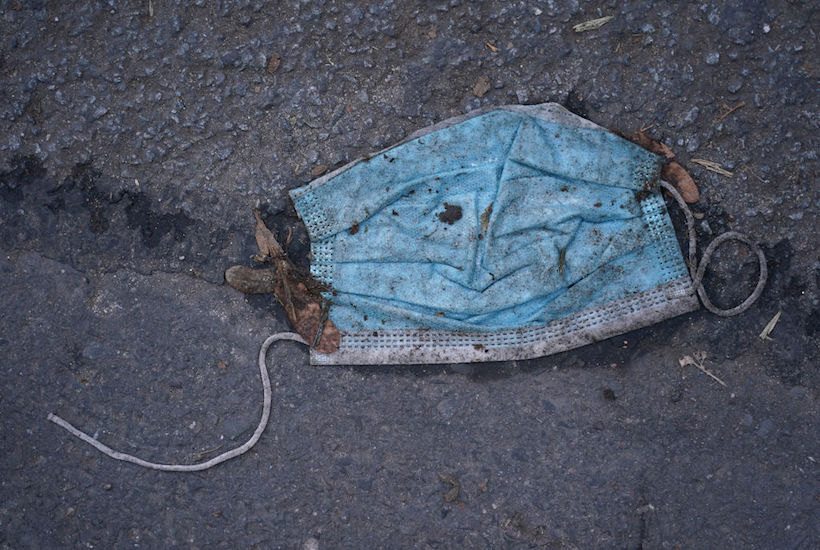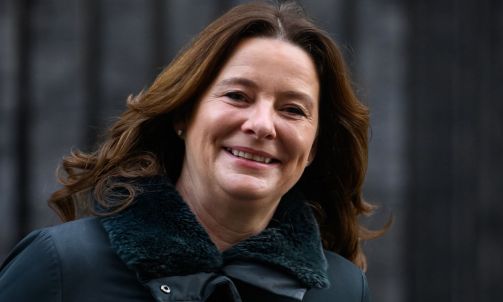Notes: The data below is generally current as at 4 November 2021 however there may be some minor discrepancies due to jurisdictional reporting methods and timeframes etc. A key source of information for this article is the Australian Government Department of Health Coronavirus (COVID-19) case numbers and statistics website, which is updated daily and presents the statistics as a snapshot at a particular point in time. Information from this source used in this article was taken from 4 November 2021. For comparison purposes some reported and referenced raw data has been extrapolated to calculate averages and percentages.

Setting the scene
- Australia has a population of approximately 25,780,000.
- The average life expectancy in Australia is 82.8.
- Covid-19 arrived in Australia in early 2020 and we have now had more than 18 months of first-hand insight into its health effects and impact on the hospital system.
- The vast majority of Covid-19 cases recover from the disease without clinical intervention.
Demographics and mortality risk of Covid-19 in Australia
The average age of death from Covid-19 in Australia (you would think an important statistic to identify which categories are at greater risk of mortality) is almost impossible to find and is not published by the Federal or State Governments as part of their routine reporting. However, it has previously been reported as approximately 85. The median age at death from Covid-19 in Australia is approximately 84.
The official Federal Government Covid-19 statistics current as at 4 November 2021 show:
- The overall case fatality rate (CFR) for Covid-19 in Australia is approximately 1.01% (1,781 deaths out of 175,813 cases) This is less than the CFR in other developed countries including the USA, UK, France and Spain.
- The vast majority (78.91%) of people diagnosed with Covid-19 in Australia are under 50 but they account for only 3.43% of all Covid-19 deaths. The CFR for Covid-19 in Australians aged under 50 is 0.04% (or 61 out of approximately 137,311).
- Out of the more than 23,000 cases in people aged under 10 there have been no deaths recorded.
- The under 20 age group accounts for more than a quarter (28.35%) of all cases. This age group has a CFR of 0.004%.
- The under 30 age group accounts for almost half (48.94%) of all cases but only 0.62% of all Covid-19 related deaths. This age group has a CFR of 0.01%.
- The under 40 age group accounts for 66.51% of all cases. This age group has a CFR of 0.02%.
- The under 50 age group accounts for more than three quarters (78.91%) of all cases. This age group has a CFR of 0.04%.
- The under 60 age group accounts for 88.51% of all cases. This age group has a CFR of 0.1%.
- The under 70 age group accounts for 94.29% of all cases. This age group has a CFR of 0.2%.
- The over 70 age group accounts for only 5.71% of all Covid-19 cases but 80.94% of all Covid-19 deaths.
- Aged Care cases account for only 1.82% of all Covid-19 cases but almost half (46.37%) of all Covid-19 deaths
The severity of disease and case fatality rate generally increases according to increasing age, e.g. the older you are the more seriously it is likely to affect you.
- The majority of deaths in Australia overall, like other developed countries, occur among older people. Sixty-six per cent of deaths registered in Australia in 2019 were among people aged 75 or over. The current statistics on Covid-19 in Australia reflect this same trend.
The official Federal Government Covid-19 statistics current as at 4 November 2021 reveal:
- Approximately 46% of all Covid-19 deaths recorded in Australia have occurred in aged care. An aged care home (sometimes known as a nursing home or residential aged care facility) is for older people who can no longer live at home and need ongoing help with everyday tasks or health care.
- Out of 1,306 cases of people aged over 90 who have tested positive to Covid-19, 884 have survived. This means that those aged over 90 have a statistical chance of over 65% of overcoming Covid-19.
- Outside of aged care the overall CFR for Covid-19 in Australia is 0.56%. If you are not an aged care resident you have a chance of approximately 99.44% of surviving a Covid-19 infection.
- In 2021 there have been 147,388 positive Covid-19 cases in Australia and 872 recorded deaths in Covid-19 positive patients. This equates to a CFR in Australia in 2021 of 0.59%.
- The current hospitalisation rate for Covid-19 cases in Australia as at 27 October is 4.66% (or 978 out of 20,975). The current ICU admission rate for Covid-19 in Australia is 0.86% (or 180 out of 20,975).
The “Delta wave” struck Australia from roughly 1 July 202
- Since then, there have been 145,129 Covid-19 cases and 871 deaths. This equates to a CFR of 0.6%. This is significantly lower than the overall Covid-19 CFR of 2.97% prior to the “Delta wave” demonstrating that although it is more infectious it is far less deadly.
- Much has been reported on the “Delta wave” being a greater threat to younger people when compared to the original Covid-19 strain. Yet while the number of positive Covid-19 cases recorded in the under 20 age category has exploded since the arrival of the Delta variant (from 4,209 to 49,337) there have been only two deaths recorded as due to Covid-19 in this age group, although the actual cause of death in one of these cases has been disputed by the hospital, who stated that Covid was not the cause of death.
- The most recent Communicable Diseases Intelligence Report reveals that in 2021 the ICU admission rate for Covid-19 positive cases aged under 18 is 0.09%. This is significantly less than the overall ICU admission rates. This report also notes that cases may be hospitalised for reasons other than clinical COVID-19 related care.
Some comparisons with influenza
On a purely statistical level the impact of Covid-19 has been substantially offset by the sudden and almost total disappearance of influenza in Australia, which in the past 5 years has seen hundreds of thousands of cases, tens of thousands of hospitalisations and thousands of deaths. After more than 18 months of the pandemic in Australia it appears Covid-19 is filling that void.
- In Australia in 2017 there were over 200,000 cases of influenza, more than 10,000 hospitalisations and over 1,000 deaths.
- In Australia in 2019 there were over 300,000 cases of influenza, approximately 4000 hospitalisations and over 900 deaths.
- In both of these years, there were no restrictions or lockdowns.
Queensland specific information
- In Queensland since the beginning of the pandemic there have been 2,092 Covid-19 cases and 7 deaths.
- In Queensland there have been approximately 269,000 people subjected to Covid-19 related quarantine notices. Over 99% of people subjected to a Covid-19 related quarantine notices have been found to be negative for Covid-19.
- In 2017 in Queensland there were 264 confirmed deaths from influenza, with 58,616 lab-confirmed cases of the disease officially recorded. This equates to a CFR of 0.47%. The number of deaths attributed to influenza in Queensland in 2017 is 37 times the amount of deaths from Covid-19 in Queensland since the beginning of the pandemic. However, there were no restrictions or lockdowns.
- In 2019 in Queensland there were again 264 confirmed deaths from influenza, with 68,148 lab-confirmed cases of the disease officially recorded. This equates to a CFR of 0.38%. The number of deaths attributed to influenza in Queensland in 2019 is 37 times the amount of deaths from Covid-19 in Queensland since the beginning of the pandemic. However, there were no restrictions or lockdowns.
- In Queensland in 2020 there were 6047 confirmed cases of influenza. 309 were admitted to hospital and 28 of these were admitted to ICU. There were 20 confirmed deaths due to influenza, more than 3 times the amount of Covid-19 related deaths (6).
- The overall annual averages for influenza in Queensland from 2017 to 2020 inclusive were:
- More than 30,000 cases
- More than 2,500 hospitalisations
- Approximately 150 deaths
- A CFR of 0.36%
- In Queensland it is clear that Covid-19 has had much less of an impact on the health of Queenslanders than an average influenza “season” and significantly less burden on the Queensland hospital system, which is nevertheless reportedly under significant pressure despite virtually no Covid-19 or influenza cases (along with Western Australia and the Northern Territory).
National statistics on deaths
- The Australian Bureau of Statistics records show there were 71,503 deaths that occurred between January and July 2021 and were registered by 31 August (including 6,257 deaths from respiratory disease). This is 4,199 deaths (6.2%) more than the 2015-19 average and 1,766 (2.5%) more than 2020. Yet only one of these deaths was due to Covid-19.
- In 2020 there were 141,116 deaths recorded in Australia. Only 0.64% (909) of these were Covid-19 related.
- In 2020 there was a decrease in mortality in Australia. Both males and females recorded the lowest standardised death rates (SDR) in the last decade. The 6% decrease in the SDR between 2019 and 2020 is the largest single-year change in the last 10 years.
- Tragically, 3,139 people died by suicide in 2020 (more than three times the number of Covid-19 deaths in the same period) making suicide the 15th leading cause of death. Covid-19 was the 38th leading cause of death.
- Covid-19 has had no negative impact on the overall average number of deaths in Australia and the average age at death.
Covid-19 vaccination information
- The Australian Federal Government has invested over $5 billion dollars of taxpayer money into 5 separate agreements to secure more than 195 million doses of Covid-19 vaccines. This is enough for every single Australian regardless of age to receive more than six doses.
- The World Health Organisation (WHO) states that most people diagnosed with Covid-19 have mild to moderate symptoms and recover without medical treatment. The WHO lists common symptoms of Covid-19 to include fever, dry cough, tiredness, aches and pains, sore throat and headaches.
- As at 31 October 2021 (the most current information from the Therapeutic Goods Administration (TGA)) there had been just over 76,000 reported adverse events following receipt of a Covid-19 vaccine. Very common side effects from the Covid-19 vaccines are similar to those experienced by symptomatic Covid-19 cases including tiredness, headache, muscle pain, fever and chills, joint pain and nausea. Similarly to Covid-19 positive cases, most people who have an adverse reaction to the Covid-19 vaccine recover without medical treatment.
- The TGA has however received 595 reports of deaths following Covid-19 vaccinations. The TGA acknowledges that as adverse event reports from consumers and health professionals are voluntary, there is under-reporting by these groups of adverse events related to therapeutic goods in Australia.
- As at 21 October 2021 there had been 383 reported deaths following receipt of the Astrazeneca vaccine. Eight of these people are confirmed to have died due to adverse reactions from the Astrazeneca Covid-19 vaccine.
- As at 31 October 2021 there had been 47 people treated in ICU for confirmed Thrombosis with Thrombocytopenia (TTS) following receipt of the Astrazeneca vaccine.
- There have been 158 confirmed and probable cases of (TTS) as a result of the Astrazeneca vaccine. There have been 141 reports of Guillain-Barre Syndrome following the Astrazeneca vaccine. To 31 October 2021, the TGA has received 87 reports of suspected Immune Thrombocytopenia (ITP) following vaccination with the Astrazeneca vaccine that could be linked to vaccination and no other obvious cause was identified.
- As at 21 October 2021 there had been 212 reported deaths following receipt of the Pfizer vaccine.
- To 31 October 2021, the TGA had received 446 reports of suspected myocarditis alone or in combination with pericarditis and 1124 reports of suspected pericarditis alone following the Pfizer and Moderna vaccine.
Data from NSW from the period between 16 June and 23 October provided the following information regarding the vaccination status of confirmed Covid-19 cases and what impact this had on the case outcomes:
- There were a total of 67,946 positive Covid-19 cases during this period and 501 deaths equating to an overall CFR of 0.74%. (For comparison there were 102,880 confirmed influenza cases and 653 influenza linked deaths in NSW in 2017, and a CFR of 0.63%).
- 56,919 (or approximately 84.09%) of the Covid-19 cases were in people who hadn’t received a Covid-19 vaccine. This includes 12,544 cases in people younger than 12 years old who were ineligible to be vaccinated. Unvaccinated people accounted for 72.14% of all Covid-19 related deaths (or 360 out of 499) and had a CFR of 0.63% (360 deaths out of 56,919 cases).
- Approximately 15.91% of the Covid-19 cases (10,772) were in people who had received either one or two doses of a Covid-19 vaccine. In this cohort there were 128 deaths recorded equating to a CFR of 1.19%. This cohort of vaccinated, although only 15.91% of the overall case numbers, accounted for approximately 25.65% of all recorded Covid-19 related deaths in this period.
- The hospital admission rate of those who had received either one or two Covid-19 vaccine doses but still ended up contracting the virus was 12.87% (1,386 out of 10,772) as opposed to 15.33% (8,726 out of 56,919) in those who hadn’t received a vaccine.
- There were 129 people who received either one or two Covid-19 vaccine doses but ended up contracting the virus anyway and who were subsequently admitted to ICU. The ICU admission rate of those who had received either one or two Covid-19 vaccine doses but ended up contracting the virus was 1.2% as opposed to 1.93% in those who hadn’t received a vaccine.
- Since 16 June, most positive Covid-19 cases in healthcare workers associated with the current NSW outbreak have been infected in the community and outside of a healthcare setting (842 out of 1010 or 83%).
- Of the 1010 healthcare workers that have been diagnosed with Covid-19 in the current outbreak, 416 (41%) have been fully vaccinated and 109 (11%) have been partially vaccinated. That equates to 52% of Covid-19 cases in healthcare workers having received either one or two doses of a Covid-19 vaccine.
- Since 16 June 2021, there have been 311 cases reported in aged care workers. Of these, 63 people (20%) had received one vaccine dose, and 119 people (38%) were fully vaccinated. That equates to 58% of Covid-19 cases in aged care workers having received either one or two doses of a Covid-19 vaccine.
- Since 16 June 2021 there have been approximately 12,544 Covid-19 cases in children under 11 years old. None of these people were vaccinated and there were no deaths recorded in this age group.
- Since 16 June 2021, 19.53% of Covid-19 cases aged older than 11 years (e.g. eligible to be vaccinated) had received either one or two Covid-19 vaccine doses.
- Approximately 80% of all Covid-19 related deaths in NSW were in people aged over 60.
- The under 40 age group accounted for about 69% of all Covid-19 cases but only 3.41% of all Covid-19 related deaths.
- This data from NSW indicates that the vaccine reduces the likelihood of contracting Covid-19. Nevertheless, if you are vaccinated but later contract Covid-19 you are only slightly less likely to be hospitalised or admitted to ICU than those who aren’t vaccinated. Interestingly those who received either one or two Covid-19 vaccine doses but contracted Covid-19 anyway, had almost double the CFR (1.19%) of those who were unvaccinated (0.63%).
- The under 30 age group in Australia is at virtually no risk of death from Covid-19 with the virus having a recorded CFR in this age group of only 0.01% out of approximately 85,000 confirmed cases. The CFR is even less in the under 20 age group which is the age group with the lowest vaccination rate.
Comment
A multitude of illnesses, diseases and injuries are prevalent in our community. These include many which are directly linked to activities which we are completely free to pursue such as drinking alcohol, smoking tobacco, consuming significant amounts of unhealthy foods, sunbaking, playing contact or extreme sports. These are personal decisions made with knowledge and acceptance of risk.
Covid-19 is not a death sentence. In Australia it has a case fatality rate of just over 1%, meaning that the vast majority of those who test positive will not die. Covid-19 is a virus that poses risks specifically to the elderly and those with existing comorbidities, and extremely negligible risk to those below 60. The vast majority of those who have died with Covid-19 in Australia are over 80 years old and have pre-existing illnesses.
Sensible precautions should be directed towards minimising the risks to those in the at-risk categories. If others outside of those at risk categories also wish to engage in the same precautions then they should be free to do so. Otherwise, Australians should be free to go about their lives without the significant burden of extreme wide-ranging restrictions. All Australians should be free to make an informed decision about how to manage the risks to their health and safety arising from Covid-19. We should especially be free to decide whether or not to receive a Covid-19 vaccination without coercion or the threat of being stripped of our jobs and ability to earn a livelihood for ourselves and our families.
Got something to add? Join the discussion and comment below.
Get 10 issues for just $10
Subscribe to The Spectator Australia today for the next 10 magazine issues, plus full online access, for just $10.

























Comments
Don't miss out
Join the conversation with other Spectator Australia readers. Subscribe to leave a comment.
SUBSCRIBEAlready a subscriber? Log in